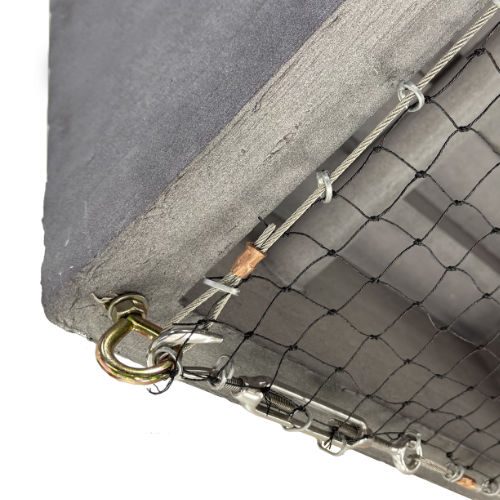Turkey Vulture Control

Recommended Products


Gridwire or polyethylene Florescent GridTwine (more visible to birds) can be suspended in various horizontal and vertical patterns to deter large aquatic birds. Grid spacings are site and species specific. You can protect lakes, parking lots, warehouse roofs, etc. from gulls, geese and other large aquatic birds.


Matching the noise to the bird’s behavior is key. There are two types of sonic devices: alarm/distress calls and frightening noise. Distress call devices mimic the bird’s natural communication sounds.

Non-toxic taste repellents can be another effective tool when combined with audio and visual products. It is best to fill the holes with a taste repellent and either spray additional repellent over the problem and surrounding area or combine repellent with paint and cover area.
Turkey Vulture Identification
The Turkey Vulture won’t win any beauty contests. The birds’ shape and head look similar to a Turkey, with a red head and dark body feathers. This large bird lives all across the U.S. The small featherless head is ideal for foraging inside of dead animals, like alligators, raccoons, and opossums. They generally hunt their prey in open country by hovering about 200 feet above the ground. Although the Turkey Vulture generally migrates, it may stay put during mild winters. They generally live over open plains, desert or forest. Turkey Vultures roost in large numbers. Groups of up to 70 or more may roost in trees and towers, and leave when the warm, rising air makes it easier to fly.
The Turkey Vulture features a bald head with reddish skin similar to that of a turkey. They are large birds weighing up to six pounds, with a wingspan up to 32 inches. Their long, slim tail and long broad wings enable it to soar on wind currents with little effort. Turkey Vultures have a well developed sense of smell, more so than any other species of bird. Surprisingly, when taken in as young birds, they can be loyal and charming pets.
Turkey Vulture Damage
The damage caused by these birds can be impressive. They are known to attack roofs, caulking and other exterior surfaces causing extensive damage, and leave bones and carcasses in unpleasant places. Being a large bird, their dropping is significant and can build up quickly if a large flock is present creating a serious health risk. They also have a reputation of being a noisy bird, especially when fighting over food sources or hanging out in a large group.
How To Get Rid Of Vultures / Turkey Vulture Deterrents
Vultures are protected under the Migratory Bird Treaty Act. This is a heavy, aggressive bird that can literally destroy many standard control products. The most effective methods of control are electrified heavy duty wire systems like BirdFence (call our offices for more details on this product) or Bird-Shock Flex-Track products. In some instances heavy duty .96 mm wire tensioned 8 in. high similar to Birdwire will protect against vultures roosting on roof parapets or girders. Ridge brackets and adjustable clamps are specifically designed to serve as a passive deterrent system at the appropriate architectural detail. This Birdwire system can also be easily electrified to increase effectiveness. Overhead Gridwire systems 5 ft. on center or horizontal nets can dissuade these birds from flat roofs. Specifically designed sound systems employing electronic noises emanating from different speakers at varying intervals like the Bird Gard should be used in conjunction with other control methods.
Turkey Vulture Nesting
Turkey Vultures do not build traditional nests like other birds, simply laying their eggs on the bare floor of a cave or other protected enclosure. Sometimes they even lay their eggs inside rotten trees, trunks, logs, on the ground inside dense shrubbery, or even on the floors of abandoned buildings. After laying the eggs, both adults may roost in the nesting cavity and, if surprised in the nest, may regurgitate decomposing food or play dead.
Turkey Vulture Breeding
Pairing is usually preceded by a group “dance” where each bird hops towards its neighbor, which then hops towards another. They generally breed between February and June, laying one to three dull-white to cream-white eggs. Eggs are often spotted or blotched with brown. Both sexes usually incubate for 38 to 41 days. Fledglings are fed by regurgitation.
Turkey Vulture Cycles
Turkey Vultures migrate as far south as South America for the winter, and as far north as Canada for the summer. They are also found in the Bahamas and the West Indies. As indicated above, they may not migrate if the weather is pleasant, they have a hospitable environment, and can locate food.


